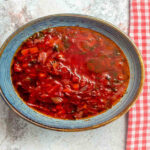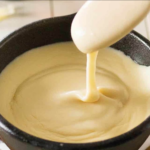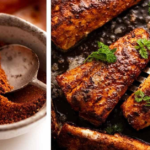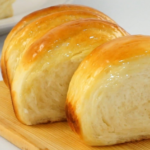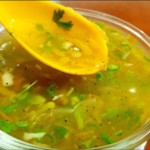Welcome to the world of delicious, creamy queso! In this blog post, we’re diving into the Costa Vida Queso Recipe, a mouthwatering blend of melted cheeses, green chilies, and bold spices. Whether you’re looking to whip up the perfect dip for your next party or add a flavorful topping to your favorite Mexican dishes, this recipe has you covered. Let’s get started on recreating this beloved restaurant-style queso at home!

Introduction
If you’re a fan of creamy, cheesy dips with a kick, the Costa Vida Queso Recipe must-try! This beloved queso recipe is the perfect blend of smooth cheese and bold flavors, making it an irresistible addition to your favorite Mexican dishes or as a standalone dip for chips. In this blog post, we’ll dive into everything you need to know to recreate this delicious dip at home, from ingredients and equipment to expert tips, serving suggestions, and a bit of history behind the dish.
Recipe Overview
Costa Vida’s queso is a creamy, cheesy dip that features Mexican-style flavors with a touch of heat. Perfect for parties, game nights, or even as a topping for your burritos, nachos, or tacos, this dip combines the richness of cheese with the zest of green chilies and spices. With just a few simple ingredients and a bit of patience, you can whip up a queso that rivals Costa Vida’s signature dip.
What is the Costa Vida Queso Recipe?
Queso is the Spanish word for “cheese,” but when it comes to food, queso refers to a creamy cheese dip often served in Mexican cuisine. It’s commonly made with a blend of melted cheese, spices, and sometimes additional flavor enhancers like green chilies or tomatoes. The beauty of queso lies in its versatility—you can serve it as a dip, drizzle it over tacos, or use it as a sauce for enchiladas.
Equipment
- Medium Saucepan: To melt and combine the ingredients smoothly.
- Whisk: Stirring the queso to ensure a smooth texture.
- Measuring Cups and Spoons: For precise measurements of ingredients.
- Serving Bowl: Once ready, transfer your queso into a serving bowl for presentation.
Ingredients
- 2 cups shredded cheddar cheese (sharp or medium)
- 1 cup shredded Monterey Jack cheese
- 1 tbsp butter
- 1 tbsp all-purpose flour
- 1 1/4 cups whole milk
- 1/2 cup green chilies (canned or roasted, chopped)
- 1/4 cup diced tomatoes (optional)
- 1/4 tsp garlic powder
- 1/4 tsp onion powder
- 1/4 tsp cumin
- Salt and pepper to taste
- Optional: Fresh cilantro for garnish
- Optional: Jalapeños for added heat
Step-by-Step Process
- Prepare the Cheese: Start by shredding the cheddar and Monterey Jack cheese if not already pre-shredded. This will help the cheese melt evenly when added to the sauce.
- Make a Roux: In a medium saucepan over medium heat, melt the butter. Once melted, whisk in the flour to form a roux. Continue to whisk until the mixture turns golden brown, which will take about 2-3 minutes.
- Add Milk: Slowly pour in the milk, whisking constantly to avoid lumps. Allow the milk to heat up and thicken, which will take about 3-4 minutes.
- Melt the Cheese: Gradually add the shredded cheese to the milk mixture, stirring constantly to melt the cheese smoothly. Continue stirring until the cheese is fully melted and you have a smooth, creamy mixture.
- Add the Flavor: Stir in the green chilies, garlic powder, onion powder, cumin, salt, and pepper. If you like, you can also add diced tomatoes for an extra layer of flavor.
- Taste and Adjust: Taste the queso and adjust the seasonings as needed. If you want more heat, add in some chopped jalapeños or a pinch of cayenne pepper.
- Serve: Once the queso is ready, transfer it to a serving bowl. Garnish with fresh cilantro or additional chopped chilies, if desired.
Serving Suggestions
- With Chips: The classic way to enjoy queso is as a dip with tortilla chips.
- On Tacos: Drizzle it over grilled chicken or beef tacos for added creaminess and flavor.
- Over Nachos: Pour it over a plate of nachos for a cheesy, indulgent treat.
- As a Burrito Sauce: Use it as a topping for burritos or enchiladas for a rich, flavorful finish.
- With Veggies: Pair it with sliced veggies like carrots, celery, or bell peppers for a healthier option.
Storage Techniques
- Refrigeration: Store any leftover queso in an airtight container in the refrigerator for up to 3-4 days. To reheat, warm it gently on the stove or in the microwave, stirring frequently to maintain its creamy texture.
- Freezing: Queso doesn’t freeze well because of its creamy texture, so it’s best to consume it fresh or refrigerated within a few days.
Expert Tips
- Don’t Overheat: Be cautious when melting the cheese—if the heat is too high, it can cause the cheese to separate and become grainy. Low and slow is the key to a smooth, creamy queso.
- Fresh Cheese: Using freshly shredded cheese instead of pre-shredded is important, as pre-shredded cheese often contains additives that can affect the queso’s texture.
- Spice it Up: For those who like spicier queso, adding a chopped jalapeño or even a dash of hot sauce will give it that extra kick.
Nutritional Information (per serving, approx. 1/4 cup)
- Calories: 140
- Protein: 6g
- Carbohydrates: 3g
- Fat: 11g
- Saturated Fat: 7g
- Sodium: 260mg
- Calcium: 190mg
History and Origin of Queso
Queso has its roots in Mexican cuisine, where cheese has been a staple ingredient for centuries. The modern cheese dip we associate with “queso” likely originated in Tex-Mex cuisine, which blends Mexican flavors with American culinary traditions. The version popularized in restaurants like Costa Vida often includes a variety of cheeses, spices, and chilies, creating a unique flavor profile that’s beloved across the southwestern United States. Today, queso has become a widespread comfort food in both the U.S. and Mexico, frequently featured in casual dining spots and family gatherings.
Some Other Recipes You’ll Love
- Peach Cobbler Recipe With Cake Mix
- Classic Vanilla Cake Recipe
- Mike’s Farm Macaroni and Cheese
- Mamey Ice Cream Recipe
FAQs
1. Can I make a queso in advance?
Yes, you can make a queso in advance and store it in the refrigerator for up to 3-4 days. Reheat it gently before serving.
2. What’s the best cheese for queso?
A mix of cheddar and Monterey Jack works best for a smooth and flavorful queso, but you can experiment with other cheeses like pepper jack for extra spice.
3. Can I make this recipe dairy-free?
Yes, you can use dairy-free cheese and plant-based milk like almond or soy to make a dairy-free version of queso.
4. How do I prevent queso from becoming grainy?
Make sure to melt the cheese on low heat and stir continuously to avoid separating or overheating, which can cause graininess.
5. Can I add meat to this queso?
Absolutely! Adding cooked ground beef, chorizo, or chicken can make your queso heartier and more filling.

